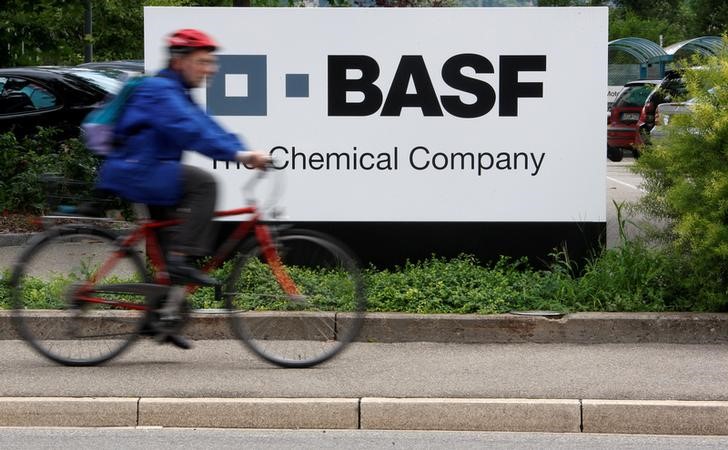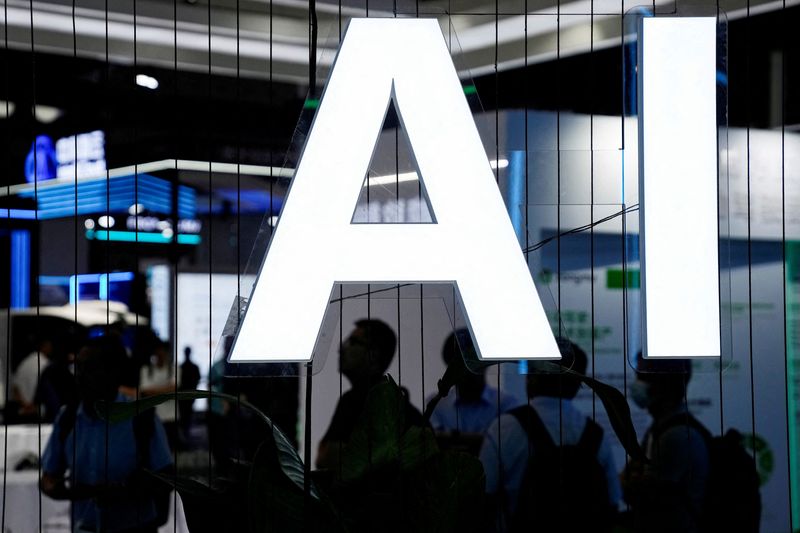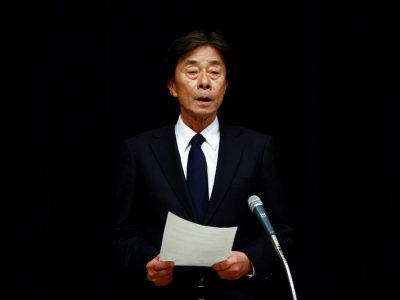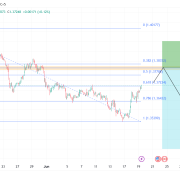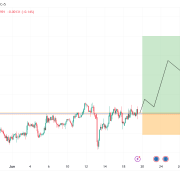
Booz Allen Hamilton (NYSE: NYSE:BAH), a leading consultancy firm, reported a strong second quarter for fiscal year 2025, with significant revenue increases across its civil, defense, and intelligence sectors. During the earnings call on [date], CEO Horacio Rozanski and CFO Matt Calderone presented an optimistic outlook, raising the company’s guidance for the fiscal year. The firm’s growth strategy, VOLT, and a record $41 billion backlog were key factors in its performance, alongside a notable $115 million insurance recovery and a $200 million boost from payroll modernization. Adjusted EBITDA and net income saw substantial year-over-year increases, and the company announced a quarterly dividend.
Key Takeaways
Civil revenues increased by 12%, defense revenues by 17%, and intelligence revenues by 8% year-over-year.
Fiscal year 2025 guidance raised due to a record backlog and an increase in client staff by 4.3%.
Financial highlights include a $115 million insurance recovery, a $200 million payroll modernization boost, and a reduced provision for claimed costs leading to a $122 million revenue increase in Q2.
Adjusted EBITDA reached $364 million, up 25% year-over-year, with net income increasing by 129% to $390 million.
Booz Allen repurchased $232 million in shares and declared a quarterly dividend of $0.51 per share.
Company Outlook
Revenue growth for FY 2025 is anticipated to be between 11% to 13%.
Adjusted EBITDA is projected between $1.3 billion and $1.33 billion.
Adjusted diluted EPS is expected to be between $6.10 and $6.30.
Bearish Highlights
The company faces re-compete risks and contract churn, including the loss of the Advana contract and a Department of Veterans Affairs contract to Deloitte.
Bullish Highlights
Booz Allen maintains a strong demand environment and a qualified pipeline of over $20 billion.
The trailing book-to-bill ratio stands at 1.5, the highest in six years.
The firm’s operating model allows for quick adaptation to client needs amid shifting priorities.
Misses
No significant misses were reported during the call.
Q&A Highlights
Executives discussed the convergence of AI, cyber, and digital solutions and the importance of data-enabled missions in sectors like public health and critical infrastructure.
The potential redeployment of approximately 800 employees in Europe was mentioned, contingent on the resolution of conflicts in the region.
Recruitment and retention trends are strong, with Booz Allen seen as an attractive destination for tech talent.
Booz Allen Hamilton (NYSE: BAH) showcased a robust financial performance in Q2 FY 2025, with CEO Horacio Rozanski crediting the VOLT growth strategy for the company’s success. The firm’s operational excellence was demonstrated by a significant increase in revenues across key sectors and a record backlog, which supports the raised guidance for the fiscal year. Despite challenges such as geopolitical instability and natural disasters, Booz Allen’s adaptability and strategic focus on technology integration for mission success position the company favorably for continued growth. The firm’s commitment to its employees and community resilience was also emphasized, rounding off a positive earnings call that underlines Booz Allen’s strong market presence and future potential.
InvestingPro Insights
Booz Allen Hamilton’s strong Q2 FY 2025 performance is further supported by data from InvestingPro. The company’s market capitalization stands at $23.5 billion, reflecting its significant presence in the consultancy sector.
InvestingPro data shows that Booz Allen’s revenue growth for the last twelve months as of Q1 2025 was 13.3%, aligning with the company’s reported increases across its civil, defense, and intelligence sectors. This growth trend is expected to continue, as evidenced by the raised guidance for FY 2025.
The company’s financial health is underscored by an InvestingPro Tip indicating that Booz Allen “operates with a moderate level of debt.” This conservative approach to leverage supports the firm’s ability to invest in growth initiatives and navigate potential market uncertainties.
Another relevant InvestingPro Tip highlights that Booz Allen “has raised its dividend for 8 consecutive years.” This consistent dividend growth, coupled with the recently declared quarterly dividend of $0.51 per share, demonstrates the company’s commitment to returning value to shareholders. The current dividend yield is 1.22%, according to InvestingPro data.
Investors should note that while Booz Allen’s P/E ratio of 39.32 suggests a premium valuation, an InvestingPro Tip indicates that the stock is “trading at a low P/E ratio relative to near-term earnings growth.” This could imply that the market has not fully priced in the company’s growth prospects, potentially offering an opportunity for investors.
For those interested in a deeper analysis, InvestingPro offers 13 additional tips for Booz Allen Hamilton, providing a comprehensive view of the company’s financial health and market position.
Full transcript – Booz Allen Hamilton Holding Corp (BAH) Q2 2025:
Operator: Good morning and thank you for standing by, and welcome to Booz Allen Hamilton’s earnings call covering the second quarter fiscal year 2025 results. At this time, all participants are in a listen-only mode. Later there will be an opportunity for questions. I’d now like to turn the call over to Ms. Lindsay (NYSE:LNN) Joyce.
Lindsay Joyce: Thank you. Good morning and thank you for joining us for Booz Allen’s second quarter fiscal year 2025 earnings call. We hope you’ve had an opportunity to read the press release we issued earlier this morning. We have also provided presentation slides on our website and are now on Slide 2. With me to talk about our business and financial results are Horacio Rozanski, our Chairman, Chief Executive Officer and President, and Matt Calderone, Executive Vice President and Chief Financial Officer. As shown in the disclaimer on Slide 3, please keep in mind that some of the items we will discuss this morning are forward-looking and may relate to future events or future financial performance and involve known and unknown risks, uncertainties, and other factors that may cause our actual results to differ materially from forecasted results discussed in our SEC filings and on this call. All forward-looking statements are expressly qualified in their entirety by the foregoing cautionary statements and speak only as of the date made. Except as required by law, we undertake no obligation to update or revise publicly any forward-looking statements whether as a result of new information, future events or otherwise. During today’s call, we will also discuss some non-GAAP financial measures and other metrics which we believe provide useful information for investors. We include an explanation of adjustments and other reconciliations of our non-GAAP measures to the most comparable GAAP measures in our second quarter fiscal year 2025 earnings release and slides. Numbers presented may be rounded and as such, they may vary slightly from those in our public disclosure. It is now my pleasure to turn the call over to our Chairman, CEO and President, Horacio Rozanski. We are now on Slide 4.
Horacio Rozanski: Thank you Lindsay and good morning everyone. Thank you for joining the call. This morning, Matt and I will discuss the company’s excellent second quarter results, but before we do, allow me to take a moment to acknowledge that the people of Booz Allen continue to excel under circumstances that are far from ordinary. Every day we see headlines – they highlight conflict and human loss around the world, divisive politics here at home, and more recently the impact of two devastating hurricanes. The news is heartbreaking and deeply concerning, yet through it all the people of Booz Allen remain focused, focused on serving our clients, on living our values, and on taking care of each other. This focus and this commitment have been the core of our company for 110 years. We believe that supporting missions of national importance is more urgent today than ever. Bringing leading edge technology to national missions at speed and scale is essential for it is how we best serve American citizens, protect the U.S. and our allies, and secure a peaceful and prosperous future. Booz Allen’s exceptional people make this a reality every single day. I am grateful to every one of my colleagues – grateful for their dedication, for their talent, and for their passion. Thank you. With that as backdrop, let’s discuss the quarter. In Q2, our operational momentum accelerated, driving excellent top line performance and cash generation, strong profitability and headcount growth, and record backlog. In addition to strong business performance, we also realized some discrete items this quarter that further enhance our results and which Matt will discuss in a few moments. Despite the challenges and uncertainties in the environment, we believe we are well positioned operationally and strategically to deliver on this fiscal year and beyond. Our growth strategy, VOLT, which stands for velocity, leadership and technology, continues to fuel our performance and positions us for the future. We now expect to deliver above our original expectations for fiscal year 2025 and are pleased to raise and narrow our top and bottom line guidance. This revised range also positions us to exceed the top end of our multi-year investment thesis, which concludes at the end of this fiscal year. I am tremendously proud that our people have driven performance above the ambitious expectations we set in 2021. Booz Allen has delivered outstanding organic revenue growth, disciplined capital deployment, and a robust increase in EBITDA dollars. This is the ultimate proof point that VOLT is working. Before Matt takes you through our performance and guidance in depth, I would like to spend a few minutes talking about the evolving dynamics within each of our markets. As you well know, our clients are operating in highly complex environments. They are increasingly pressured by geopolitical instability, rapidly advancing technology cycles, and a growing threat landscape all in a fraught political and economic environment. Within this context, Booz Allen strives to use innovation to help our clients navigate these expanding and durable challenges and to drive our own financial performance, and just as we have transformed to gain speed and scale in bringing technology to missions, we feel we are prepared to adapt to these conditions and achieve our growth goals. I’ll start with our civil portfolio, which continues to be strong and vibrant. Civil revenues rose approximately 12% from the prior year quarter exclusive of the discrete items Matt will cover in more detail. Technology has fundamentally altered the relationship between the federal government and its citizens. It has also changed the means, methods and pace of collaboration between government agencies. Across a range of missions, we are helping our clients support citizens, their wellbeing, and the resilience of the national economy. When put together, this has driven double-digit growth in this business for the past 13 quarters along with strong margins and high demand. Today, building on two decades supporting civil clients with IT modernization and transformation, we are able to capitalize on technology advancements and leverage data to deliver scaled outcomes at the mission level. As our civil clients’ missions become more complex and interconnected, Booz Allen is in a unique position to help them and, in doing so, continue robust growth over the medium term. In the immediate term, our civil clients are facing greater uncertainty inherent in the current political season and limited visibility into the next administration’s domestic agenda. This is manifesting in some turbulence in the demand and acquisition processes and an increase in price competition. Our near term prospects remain strong but we are seeing more disruption in the procurement environment than in the past few years. Let’s turn now to the intelligence market. We are thrilled to see a return to growth this quarter as anticipated. Revenue increased 8% year-over-year in this market exclusive of the discrete items. We have completed our transition of this business from primarily analyst-focused to one that is truly technology enabled. It is optimized to leverage advanced technologies to support intelligence missions across domains. Our approach to cyber as one battle space is a great example. We organized our cyber business to meet adversaries where they are across defense, intel, civil and commercial infrastructures, enabling us to bring the full scale and expertise of Booz Allen anywhere in this mission. Those of you who had a chance to attend our cyber event last month, our Helix Center for Innovation, saw how the evolution of this business over three decades has positioned Booz Allen at the center of nearly all major cyber missions across public and private sectors. We expect our total cyber revenue to reach between $2.5 billion and $2.8 billion by the end of this fiscal year, and we aim to double that revenue in the next five years. Without a doubt, Booz Allen is one of the most impactful cyber security firms today. Given the accelerated pace and scope of our adversaries and the relative budget stability in this market, we believe we are well positioned to capture future opportunities. We expect to see significant growth in our intelligence business, both in the near and in the medium term. Finally and excitingly, our defense business, which has delivered double-digit growth for the past six quarters, continues to accelerate with revenue increasing 17% year-over-year exclusive of discrete items. This is driven by two primary components: one, the strategic support we are providing to clients around the world on existing geopolitical conflicts; and two, the increasingly important role that Booz Allen plays in modernizing existing systems and building the war fighting capability of the future. Aligned with strategic defense missions in Europe, the Pacific and elsewhere, we have won several awards exceeding $500 million each just in the first half of FY25. This critical work is delivered by a growing defense talent base and augmented by technology investments in key areas, including space, AI, and the digital battle space. Together these components, exceptional talent and cutting edge technology drives growth across our defense business and they are producing new opportunities such as a recent five-year, $2.6 billion task order award called Service Solutions for Modernization, Analysis, Readiness Capability, Threat and Training, or SSMARTT. SSMARTT includes a full spectrum of innovative enterprise services and solutions. This work supports the modernization of current four structure capabilities across the Army and its strategic mission partners. SSMARTT is but one of a number of contracts that focuses on the acceleration of technology into defense missions. This is well aligned to Booz Allen’s focus on delivering innovation at speed, including through dual use technologies. We continue to build, partner and invest in new ways to help maintain U.S. technological superiority in our national security posture. Amid geopolitical conflict and tension, urgency for accelerating defense missions and strong demand for emerging technology, we remain confident about the continued expansion of our defense business and of its impact. To summarize, across our business, we are staying close to our clients and mapping a path to growth that responds to their evolving needs. VOLT has positioned us to accelerate the virtuous cycle across client work, talent and investments, and as you well know, Booz Allen always looks to outpace and especially so in rapidly evolving markets; thus, I am extremely pleased with the progress we have made strategically and financially at the midpoint of this fiscal year and as we approach the end of our investment thesis period. Working alongside our clients, Booz Allen is making a tangible difference across the most critical and most enduring missions of our time. With that, Matt, the floor is yours.
Matt Calderone: Thank you Horatio, and good morning everybody. As Horatio said, we had a strong second quarter both operationally and financially. We continued to generate significant momentum in the quarter and, as a result, Booz Allen remains well positioned to deliver compounded growth and financial returns into the future. I have a lot of good news to report, but I recognize that our results this quarter may require more explanation than usual. To aid in that, we have provided a detailed crosswalk of our fiscal year guidance in our earnings presentation. I have six takeaways from our performance in the quarter that should frame how you interpret our results. First, we had a strong operating quarter. At the top line, organic revenue growth was in solid double digits, even when excluding some discrete items in the quarter. Adjusted EBITDA margins increased significantly due to improved operational performance, cost discipline taking hold faster than anticipated, and reversal of some of the non-operational and timing-related factors discussed on our last call. Second, we continued to build significant momentum. We booked $8.2 billion of awards in the second quarter, not including work under protest. Our backlog now stands at a record $41 billion. We continue to hire aggressively. Through the first half of this fiscal year, we have increased client staff by 4.3%. Third, three discrete items occurred in the quarter that will collectively provide immediate and long term financial benefits. I will cover these in detail in a moment. Fourth, we deployed a significant amount of capital to generate value for shareholders. In the quarter, we repurchased about 1.2% of our shares or $232 million worth at an average price of $146.63 per share. Fifth, as a result, we are pleased to raise guidance across all metrics for full fiscal year 2025; and finally as Horacio said, we are now guiding to exceed the top end of our investment thesis almost entirely through organic performance. As I mentioned, our headline numbers were positively impacted by three discrete items in the quarter. Let me walk you through these items before I dive into our second quarter numbers in more detail. Please turn to Slide 10. First, we collected a $115 million recovery from our insurers related to the Department of Justice settlement last fiscal year. This was not contemplated in our original fiscal year guidance, is additive to operating cash flow for the quarter, and is excluded from adjusted EBITDA. Second, we received a roughly $200 million tailwind to operating cash this quarter related to the modernization of our payroll in July. This was reflected in our original fiscal year guidance. Finally, we received results of incurred cost submission audits for three historical rate years. This resulted in a change in estimate for our provision for claim costs for all rate years subsequent to fiscal year 2011. As we have disclosed, Booz Allen did not have normal course government cost accounting audits for more than a decade. As a result, by the end of last quarter, we had accumulated a reserve of about $375 million for estimated adjustments to historical claim costs. This provision for claim costs covers all rate years subsequent to our fiscal year 2011, none of which had been fully resolved. Since our settlement last July, a wide range of activity has resumed, including incurred cost submission audits for a total of four historical rate years. Teams from Booz Allen, along with our government counterparts at DCMA and DCAA have worked tirelessly to address this backlog of audits, and thanks to their efforts, we are also now back on a normal course annual review cycle. This work has been hard, but the collective focus on collaboration, mutual respect and transparency has yielded real progress. I very much appreciate the efforts of everyone to date while recognizing that significant work remains to be done. The impact of this effort will occur over three time frames. First, we changed our estimate of the provision for claimed costs for all open rate years back to fiscal year 2011. Our total provision for claim costs as of September 30 was reduced to $246 million. This reduction increased revenue by $122 million in the second quarter, or 4.6%. Of this $122 million, about $113 million was related to reserves for historical years and thus have been excluded from adjusted EBITDA. Second, we reduced the provision for claimed costs for the first half of this fiscal year and revised our forecast for the second half. We anticipate about a $30 million positive impact to adjusted EBITDA for this fiscal year relative to our original guidance assumptions. Third, we anticipate an approximately 20 basis point increase in our profit margins going forward. This will better reflect the underlying profitability of our business and is consistent with industry practice. Please note that while we continue to make progress with our regulators, there have not been any final resolutions nor any cash settlements related to our open rate years. I’ll now cover our quarterly results in more detail. Please turn to Slide 6. Total revenue for the quarter grew 18% year-over-year to $3.1 billion. Organic revenue increased 17% year-over-year, and revenue excluding billable expenses grew about 18%. The change in provision for claimed costs I just described increased quarterly revenue growth by 4.6%. This increase was felt proportionately across all markets. Pivoting now to demand, please turn to Slide 7. Net bookings for the quarter were $8.2 billion and our quarterly book-to-bill was 2.6 times. This translated to a trailing 12-month book-to-bill of 1.5 times. This is our highest in six years. Total backlog as of September 30 was a record $41 billion, up about 18% from a year ago. This exceptional bookings performance, particularly strong in defense and intel, provides us ample fuel for continued above-market growth. Our performance in the supply side was just as strong. In the first half, we grew client staff by 1,360, a 4.3% increase in client staff in our first half alone. This puts us on pace to exceed our fiscal year target of 3% to 5% growth and sets us well for this year and beyond. Our total client staff headcount is now nearly 33,000 employees. This is 8.1% higher than a year ago. In a competitive labor market, the Booz Allen value proposition continues to resonate. Moving now to the bottom line, we delivered $364 million in adjusted EBITDA, approximately 25% higher than the prior year period. Our adjusted EBITDA margin was 11.6%, up 70 basis points compared to the prior year quarter. This exceeded our expectations and was ahead of the moderately ascending margin profile we projected on our first quarter earnings call. For the first half, our adjusted EBITDA margin was 10.9%, roughly on par with our expectations for the full fiscal year. Moving down the P&L, net income for the quarter was $390 million, 129% higher year-over-year. In addition to the items I noted previously, this included an $11 million fair value increase to two strategic investments in our corporate venture capital fund. Adjusted net income increased 38% year-over-year to $233 million. Diluted earnings per share increased 133% year-over-year to $3.01 per share. Adjusted diluted earnings per share increased 40% year-over-year to $1.81. Transitioning to the balance sheet, we ended the second quarter with $559 million of cash on hand, net debt of $3 billion, and a net leverage ratio of 2.3 times adjusted EBITDA for the trailing 12 months. Free cash flow for the quarter was $563 million, a result of $587 million of cash from operations less $24 million of capex. In addition to the impact of discrete items I noted earlier, we had a strong collection quarter evidenced by a four-day DSO improvement over the prior year quarter. Turning now to capital deployment on Slide 8, in the second quarter, we deployed a total of $300 million. This included $232 million in share repurchases, $66 million in quarterly dividends, and $2 million of strategic investments through our corporate venture capital fund. In addition, I’ll note that our board has approved a quarterly dividend of $0.51 per share, which will be payable on December 4 to stockholders of record as of November 15. The strength of our balance sheet gives us operating flexibility and the ability to deploy capital in a disciplined manner to generate value for shareholders. It remains a source of strategic advantage. Our strong first half performance sets us up well for potential volatility and uncertainty in the second half. We are on track for an excellent fiscal year overall. Let me now walk you through our updated guidance for fiscal year 2025. Please turn to Slide 9. At the top line, we now expect revenue growth of 11% to 13%. We are raising our adjusted EBITDA guidance to a range of $1.3 billion to $1.33 billion. This implies an adjusted EBITDA margin of about 11%. We now anticipate operating cash flow of between $925 million and $1.025 billion, and free cash flow of between $825 million and $925 million. Lastly, we are raising our ADEPS guidance to a range of $6.10 to $6.30 per share. In closing, we are extremely proud of our second quarter performance. Let me share again my six core takeaways. First, we had a strong operating quarter. Second, we continued to build significant momentum. Third, three discrete items occurred that collectively provide immediate and long term financial benefits. This includes an anticipated roughly 20 basis point lasting increase to EBITDA margins. Fourth, we deployed a significant amount of capital to generate value for shareholders. Fifth, we are pleased to raise guidance across all metrics for full fiscal year 2025; and finally, we are now guiding to exceed the top end of our investment thesis almost entirely through organic performance, a truly exceptional feat. As always, Booz Allen continued to build in the quarter, positioning us well to deliver compounded growth and financial returns well into the future. With that, Operator, let’s open the line for questions.
Operator: Thank you so much. [Operator instructions] Our first question comes from Ellen Page with Jefferies. Please proceed.
Ellen Page: Hi guys, thanks for the questions.
Horacio Rozanski: Good morning Ellen.
Matt Calderone: Good morning Ellen.
Ellen Page: Good morning. Guidance implies a deceleration – I guess there’s one-time items in Q2, but 9% organic in H2, I think. How do we think about the drivers of growth in the back half, and what are you contemplating in terms of election risk and the risk from a change in administration?
Horacio Rozanski: Sure Ellen, why don’t I start? First of all, as you said, this is a turbulent environment with some uncertainty in it. It’s inevitable to know that we’re 11 days from a very significant election that will not just affect who’s in the White House but also could affect who controls the Chamber of Congress, and that does create some potential for reduced visibility and a change in priorities and agendas in the near term, as we said, particularly in our civil market. We are also–geopolitically, you know, there are two ongoing wars in the Middle East and Eastern Europe and increasing tensions in Indo-Pacific, which also affects the entirety of our markets. Taken together, this is a more volatile external environment than we’ve seen in a while. Against that backdrop, the performance in the first half is something that we’re very proud of. The team did an exceptional job managing through all of that and doing two things: first of all, delivering excellent results, but importantly driving momentum. When you look at hiring, when you look at backlog, when you look at all of the leading indicators of the business, they’re all extremely positive and, to some degree, ahead of pace, so we feel very good about where we are. You know, there’s always the possibility of a black swan type event – we have not contemplated that into anything by definition because you can’t know what that could be, but this is my third change of administration–this will be my third change of administration in almost a decade that I’ve been in this job, and then many more in my time at Booz Allen, and I will tell you this – our operating model becomes a unique asset when there’s a change in priorities, because we tend to be able to adapt to changing priorities, to figure out to support clients against new demands really faster than anybody else. While the past is not necessarily an indication of the future and all of that, we look to outpace when there’s a change like this. As I look at the business, and again absent something totally unforeseen, I feel very bullish about where we are, both at the top line and at the bottom line as I look not just at this year but coming into next year.
Ellen Page: Thanks, helpful. Maybe one for Matt – you mentioned that you haven’t seen a cash impact from the change in audit adjustments. What’s the range of outcomes there? Can you help us understand that?
Matt Calderone: Yes, thanks Ellen. We have not seen a cash impact, and reminder, we haven’t fully settled these rate years, although we do have four audits which give us comfort in changing the estimates for the impact to the backlog, but I would not build any expectation of cash into your models right now. We think we’re appropriately reserved and that should be your expectation.
Ellen Page: I’ll leave it there.
Operator: Thank you. One moment for our next question. It comes from the line of Cai von Rumohr with TD Cowen. Please proceed.
Horacio Rozanski: Morning Cai.
Cai von Rumohr: Yes, thank you very much. Good morning. Good results. Matt, you know, you basically mentioned the benefits of the payroll modernization, and to Ellen’s point regarding the claims, you’ve got good improvement in your DSOs, about – what, 64 days. That’s still well above many of your competitors. Where do you think that number can go, and how long would it take to get there?
Matt Calderone: Thanks Cai. As I’ve mentioned, I think at your conference, embedded in our DSO numbers is about five days of DSOs that are tied up in the resolution of these backlogged audits. We aspire to generate 100% or more free cash flow relative to net income, and we’re close to there, Cai. We improved DSO performance this year, as you said, four days in the quarter, two days for the full year. We think that two days will persist and we’re going to continue to work on it to bring us closer to where we want to be. But very happy with our cash performance overall. Obviously the one-time good guy of the net insurance recovery was excellent in this quarter, and we continue to improve operationally.
Cai von Rumohr: Terrific, and then obviously the bookings were great, all around fabulous. In prior quarters, you’ve given some useful metrics in terms of gauging your potential going forward – that would be qualified pipeline, submitted proposals, and proposals in process. Where were they at the end of the quarter?
Matt Calderone: Yes, thanks. We had so much news, Cai, to report that–
Cai von Rumohr: Absolutely.
Matt Calderone: It was a busy quarter, but our qualified pipeline is roughly in line with where it was at this point last year. It’s about $20 billion or more in qualified pipeline, but we had a strong finish to last year as well, so we’re really pleased with our book-to-bill. As you know, this excludes work under protest, but we’re in as good as place as we’ve been really in the last half a decade from a demand perspective.
Horacio Rozanski: Yes, that’s absolutely right. I think it’s worth coming back to that point, that we really are not demand constrained. I mean, if you look at the last 12 months, the trailing book-to-bill is 1.5, which is–you know, we haven’t seen something along those numbers in five or six years. What makes me excited is when I look at the work we’re doing in Indo-Pacific, when I look at the work we are doing against key domestic priorities like public health. We see demand increasing, and we see what we’re bringing, which is the top AI business, the top cyber business, leading business in digital transformation, and then new ideas around using AI for software-defined networks, using quantum – really, things our clients are more and more interested in, more and more asking for, and more and more getting included in some of these very large procurements.
Cai von Rumohr: Excellent, thank you very much.
Horacio Rozanski: Thank you.
Operator: Our next question comes from the line of Louie DiPalma with William Blair. Please proceed.
Louie DiPalma: Horacio, Matt and Lindsay, good morning.
Matt Calderone: Good morning.
Horacio Rozanski: Hey Louie.
Louie DiPalma: Can you discuss just how strong the demand environment is relative to how–you know, there seems to potentially be a headwind from the Advana contract next year, and I think Matt, at a recent conference, you alluded to a churn incident related to a Department of Veterans Affairs contract that was awarded to Deloitte. Is demand so strong that any one particular contract, or two contracts isn’t enough to really sway the overall organic revenue trajectory of the company?
Horacio Rozanski: Louie, that’s a great question, and I think the two of us are potentially going to want to comment on it. Let me start by saying, as you know, we’re not defined by a single contract, and it’s the strength of the business overall that has driven Booz Allen. If I take you back to take you forward, we had a discussion last year about an intel contract and what that was going to do, and we ended the year with extraordinary organic growth, and that momentum continues to drive into the business. Because we have the ability to–in the rare occasion that we do lose a contract, the ability to retain the talent and re-apply the talent to other things, intel is a great launching point for that conversation because if you look at the growth that they’re experiencing now and some of the things they’re winning now, they’re also in part driven by the fact that we were able to take some extraordinary cyber talent and apply them to new things, and that has driven new growth. That’s really the way, as you know, we operate. If you look at our civil business, as I mentioned, we are seeing a little more price competition. We are seeing more procurement disruption than we’ve seen in a little while. I think part of that is driven by the fact that the domestic agenda is most affected when there’s a change in administration, and regardless how the election turns out, this is a change of administration and so we’re beginning to see that. Having said that, we feel really good about where we are. There is growth in some areas, accelerated growth in some areas, there is potentially some contract churn in other areas. When you put it all together, we think our civil business is going to continue to grow nicely, and we feel good about it. Then ultimately to go back to your original point about Advana and the totality of our defense business, as you see, the defense business is really on fire in terms of capturing new demand. We are very proud of the work that we’ve done in support of DoD on Advana from its very inception as a relatively small program inside the controllership to what it’s become, which is really the leading program to give war fighters at all levels complete visibility to the data set for DoD, something that had never been done before. I think if you asked our clients, who deserve all the credit for doing this, they would recognize that Booz Allen has played a valuable role, so that’s a good place to be going into a competition. But more broadly than that, if you look at our portfolio in defense, you have things obviously that get re-competed, you have completely new work, some of which we won in this quarter in the Pacific, and then you have programs like SSMARTT. If I take you back, SSMARTT started as a global threat mitigation program many years ago – it was actually the first billion-dollar task order that Booz Allen ever won, and it’s now at $2.6 billion, and this is one of these hybrid contracts where each re-compete is both a continuation of work and an expansion of scope and an expansion of need, as new technology deploys around the world at the speed that war fighters need becomes a greater need. You know, defense had a tremendous quarter – 17% for the quarter is pretty extraordinary for a business that is half of our portfolio, and we see potential for more.
Matt Calderone: Yes, we’ve been talking for the past few quarters about how we thought this year had slightly more re-compete risk, but also significantly more opportunity if you look at the totality of our proposal pipeline, and we saw that play out. I think we’ve won seven jobs in the first half over half a billion dollars – let that sink in for a minute, and it’s really a testament to how well we are positioned strategically through the resilience of our business model and the strength of our portfolio, that even if we do lose a re-compete, we can post the kind of numbers we’ve posted this quarter. We feel really good about where we are. As Horacio said, mix may be shifting a little bit in the near term, but there is real optimism and energy in the business. We’re doing exactly the kind of work we want to be doing, and we feel good about the future.
Louie DiPalma: Thanks Matt and Horacio. On that subject of scope expansions, I think at the recent Helix cybersecurity event, you talked about an attach rate of how a very high percentage – I forget off the top of my head – of your overall contracts have a cybersecurity component, and then last year at the Helix, you talked about how a very high percentage of your overall contracts have an AI component now. Does this lead for more scope expansions such that when you’re renewing these contracts, there might be a plus-10% or a plus-20%, just because you’re adding zero trust or language learning models to your existing contracts?
Horacio Rozanski: You know, I think that’s exactly right. Each contract is different and they’re all not going to have scope expansions and everything else, but overall as I talked about at the cyber event, we believe that the notion of convergence of these technologies into missions in aggregate is here to stay, so this is not about delivering cyber in one place and delivering AI in another place and delivering digital in another place and delivering edge in a fourth place, in space in a fifth place. It’s all of these things come together to affect the mission, where the answer is going to be, where the demand is going to be, and where Booz Allen is already playing. Again, I go back to our operating model, the fact that we have a very collaborative culture, the fact that we have a common incentive structure, the fact that people are taught from an early day at Booz Allen to work together and integrate. It’s a huge asset as all of these technologies come together. Last year, as you know, we talked about AI and cyber. This year, we talked about cyber and AI. All of these things are coming together, and we believe that we’re uniquely positioned to capture that opportunity.
Louie DiPalma: Excellent. Thanks everyone. Thanks Horacio and Matt.
Horacio Rozanski: Thank you.
Operator: Thank you. Our next question is from the line of Tobey Sommer with Truist Securities. Please proceed.
Tobey Sommer: Thank you. I was wondering if you could comment about the relatively strong increase in backlog and the slightly slower increase in funded backlog. What’s the explanatory factor between the–the discrepancy between the two?
Matt Calderone: There’s really nothing I’d take away from that. I mean, our contracts are slightly longer in duration, which means they’re funded in different ways, a lot of the big jobs we’re winning, but I wouldn’t read anything into it.
Horacio Rozanski: Yes, we’re not seeing anything unusual in the funding environment at this point.
Tobey Sommer: Okay, and with respect to the conflicts in the Middle East and Europe, should they be resolved or come to sort of conclusion, what if any impacts do you think that might have on the company?
Horacio Rozanski: You know, I hope that all of that happens. I think the world would be a better place, and Booz Allen would be a happier place if all of these conflicts were resolved. Just to dimensionalize it, we have about 800 people working across the European theater, and some of that is certainly surge capacity over the immediate needs; but honestly, should those conflicts be resolved, and let’s hope that they are, call it a couple hundred people, give or take, that could be all of a sudden not needed for that, have unique skills, we would love to put them on some of this new work that we just won.
Tobey Sommer: Then the recruiting environment and retention environment, I was just hoping you could comment on that. We’re now several years into easier recruiting and improvements in retention broadly. Do you see those trends continuing into calendar ’25?
Horacio Rozanski: In general, yes. I think part of it is the–it is a, call it less crazy environment, especially for tech talent, now than it was three or four years ago. But importantly, every day we see Booz Allen as more of a destination for unique talent. I think this combination of leading edge technology and mission, when I talk to candidates, to recent hires, to very senior people that have an interest in Booz Allen, that has really resonated and I think it’s giving us not just numbers, but it’s giving us a depth of talent we wouldn’t have been able to capture. I’ll share an anecdote, just to give you a sense of what we’re talking about. We have a senior open position, and the first part of the search was done confidentially, meaning we couldn’t–our recruiters could not tell the market who they were recruiting from. We saw some level of interest, and then when we were able to move to the phase where we could say that it was for Booz Allen, there was a huge spike in both the quantity and the quality of very senior level resumes that we got to see, and I think that’s what’s happened. I think in addition to being a little bit better market, our brand is the strongest I’ve ever seen it, and I’ve been in and around this topic for over 20 years now.
Matt Calderone: Yes, historically slightly more than a third of our employees come through employer furloughs – that number has actually ticked up, and as Horacio said, there is an energy and an excitement in Booz Allen that is as strong as I’ve ever seen it. People view their work as important, impactful, interesting. They’re staying and they’re recommending us to their friends. Just to give you one data point, we had one month – I think this quarter, but if not this quarter, last quarter – where we had over 100,000 applicants to Booz Allen. Let that sink in for a minute. We’re a place where people want to come because they want to grow their careers, they want to do work that’s deeply technical and work that has real mission impact, so we don’t foresee those trends changing.
Tobey Sommer: Thank you very much.
Operator: Thank you. Our next question comes from the line of David Strauss with Barclays. Please proceed.
Josh Korn: Hi, good morning. Thanks for taking the questions. It’s actually Josh Korn on for David. Last quarter, you talked about margin impact from hiring, some contract timing, things like that, and I think you had suggested things would progress a little more slowly throughout the year, off of Q1. Just wanted to ask about how those factors trended in the second quarter and how they improved, contributing to the big margin increase this time. Thanks.
Matt Calderone: Yes, you saw the results – I think it snapped back and in some ways faster than we thought, so good operating quarter, cost discipline took hold, and a lot of the one-time or timing related items we highlighted in Q1 actually reverted in some cases quicker than we thought. I’d really think about Q1 and Q2 as a whole – for the first half, we delivered margins of 10.9%, we’re guiding to 11% for the year overall. We’re right where we want to be after six months. But I’ll remind you again, we do focus on EBITDA dollars. We’re incredibly proud of the fact that we ended last year at $1.175 billion in adjusted EBITDA, we’re guiding to $1.3 billion to $1.33 billion this year. That’s a great year.
Josh Korn: Great, thanks. I’ll stick to one.
Operator: Thank you so much. The last question, one moment please, comes from the line of Mariana Perez Mora with Bank of America. Please proceed.
Mariana Perez Mora: Good morning everyone.
Horacio Rozanski: Hi Mariana.
Mariana Perez Mora: My question is going to be about defense and intel and the transition. You mentioned in the prepared remarks that in the intelligence business, it’s more like technology than analyst solutions or missions right now. I was surprised at AUSA to learn that you’re going to open your third engineering facility focused on rapid prototyping for the tactical assault kit, the TAK solutions that you acquired with PAR. You have been really successful navigating this balance between being the agnostic integrator of technologies but also jumping into technology solutions, where the analyst or the engineer and the technology are inseparable to actually have an outcome on time. How are you thinking about the hardware, how are you thinking about this software-driven [indiscernible] technology and solutions in the future earnings? How do you think Booz Allen could play a role and add value in that regard?
Horacio Rozanski: You know, it’s a great question. For context, I think what we really did is we took work, prototyping work that was being done across our defense portfolio and integrated it primarily into three facilities in order to be able to gain scale and expertise and accelerate all of that. But this is not entirely new, it’s just an accelerating area of focus. I think what we’re seeing, especially when it comes to our defense business, is that so much of what’s needed is going to happen at the edge. It needs to happen in environments where communications are degraded or non-existent. It needs to happen in a way that can respond to the unique needs of a war fighter, which may be something that needs to get carried on a belt, or it needs to be able to withstand the acceleration of a fighter jet. We think about ourselves as the people that can really integrate across the entirety of that solution. We don’t expect we’re going to be making a lot of these things. We expect that we can partner, we expect that we can bring dual use technologies to play much faster, we can adapt things that are already out there perhaps for commercial, even consumer use into these missions, and we see Booz Allen as the people who can do it most reliably, fastest, and ultimately who can scale this the fastest. We have work ongoing already that integrates things that are happening at the edge, on technology stacks that we are building from scratch with some of our partners, to things that happen in the cloud and those two things need to communicate when they can and operate asynchronously when they won’t be able to, to things we’re doing in space. This is an area and it all fits into this notion that we believe our clients ultimately will be moving to a more outcome-based view. We believe we have unique intellectual property and intellectual capital that will give us both the opportunity to play there, but also the opportunity to increase our EBITDA dollar acceleration, to increase our margins and so forth over the medium to longer term, and we’re very excited about everything that’s happening there. It’s all really happening, again, against this modality that says, what are the missions of national priority, what are the new technologies in their totality that need to be brought in, and how can we do that at scale and fast.
Mariana Perez Mora: Great, thank you. Then my second question is around the civilian clients. Despite this near term turbulence, how do you see the market going forward and where do you see most of the demand, because I could see a case for protecting critical infrastructure, like some cyber security and things like that, like getting digitalization to actually be more cost effective in a budget pressure environment. Where do you see most of the opportunities going forward?
Horacio Rozanski: If I had to summarize our presence and our growth in the civilian market, I think the word would be data-enabled missions, where are all the places where bringing data in a different way will accelerate mission success. Public health is a clear area, and I was just in Atlanta at the CDC, understanding from our clients what they need and working with them on it, a lot of our work at the VA in terms of modernizing and accelerating so that our veterans get better care and faster, our work in law enforcement which connects deeply to our work in national security and across the board. As you say, climate, the defense of critical infrastructure and so forth, the common threat for us is in any place we’re bringing data to the mission fastest creates mission leverage. That’s where Booz Allen is excelling, that’s where Booz Allen is playing our best role, and that’s where I think the real growth is going to be in the medium term. I think this is a pretty robust set of opportunities that will respond to the next administration’s priorities, once we understand what those are.
Mariana Perez Mora: Great. Thank you very much for the color.
Horacio Rozanski: Thank you.
Operator: Thank you so much, and this concludes our Q&A session. I will turn the call back to Horatio Rozanski for his concluding comments.
Horacio Rozanski: Thank you Carmen, and thank you all for your questions and for being with us this morning. You know, at the start of the call, I touched on the recent hurricanes which have impacted millions of people, and that includes many of our colleagues; so before we conclude today, if you will allow me, I would like to take a moment to recognize the incredible people of Booz Allen and how they’ve come together in the wake of these storms. Our crisis management teams worked literally around the clock to account for everybody, to provide assistance to thousands of employees that were in the paths of these two storms as they cut across the southeast. Our client teams answered the call and worked on providing information that ultimately became life-saving information and support to first responders, and then volunteers in that area and far and wide across Booz Allen gave their time, donated money, donated things and stood up to help all affected. That’s really the spirit of Booz Allen. It’s awe-inspiring to watch my colleagues rise up at a time like this, and so I just want to finish by thanking everybody at Booz Allen for always being there for one another, and for once again showing the world who we are. With that, thank you again for being on the call, and have a great day.
Operator: Thank you. Ladies and gentlemen, this concludes our program, and you may now disconnect.
This article was generated with the support of AI and reviewed by an editor. For more information see our T&C.


